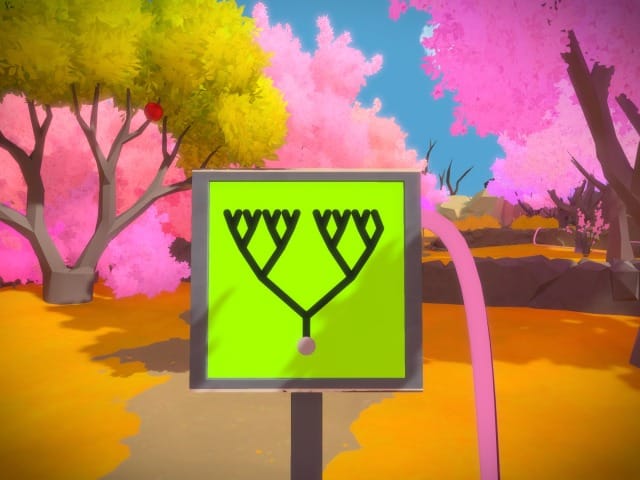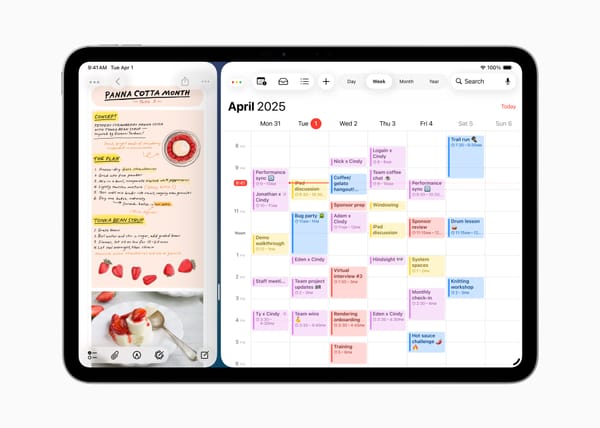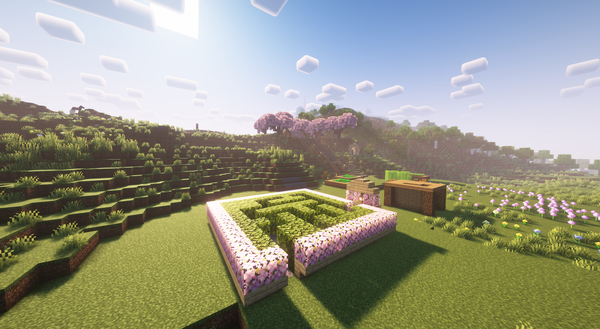The Witness - A metaphor of perspective and my college journey
After spending about two weeks playing The Witness, I realized that the game is a great metaphor for the journey I’ve been on for the past four years at Goucher College.

The Witness always captured my attention every time I browsed the Games section of the Mac App Store. The colorful and vibrant screenshots invited me to play, despite the hefty price tag attached to it. I couldn’t afford the game and kept it in my App Store wishlist until I purchased the game for ten dollars on the App Store for the iPad. After spending about two weeks playing The Witness, I realize that the game is a great metaphor for the journey I’ve been on for the past four years at Goucher College.
Before I begin, I’d like to clarify that this isn’t necessarily a review of The Witness, but rather a reflection of how strongly it parallels to my college experience in various aspects. Like the college experience itself, The Witness has its moments of success and failures. However, I do not plan on touching anything specific about the game unless it follows my experiences at Goucher.
There are plenty of reviews on The Witness that I recommend viewing:
- Joseph Anderson: “The Witness - A Great Game That You Shouldn’t Play”
- Electron Dance: “The Unbearable Now - An Interpretation of The Witness”
- Writing on Games: “The Witness and the Rejection of Immediacy”
Furthermore, there will be spoilers; if you haven’t already, go play The Witness before reading this reflection (that is, unless you don’t plan on playing it).
The humble beginnings
The Witness starts with a few swipes on the screen to solve the first of many line puzzles where the player has to draw a line to a destination while following certain constraints. The colorful and vibrant environment invites you to explore the area as the player complete the tutorial. While nothing is explicitly told to them, the player is carefully guided by the puzzle panels’ imaginary hands to a correct solution while being allowed to explore other solutions to the puzzles. After unlocking the gate and exiting the garden area, they are greeted with a puzzle on a door with colored squares and hexagons on lines that the player isn’t able to solve at first. They likely decide to look elsewhere and stumble upon the series of puzzles that explain these mechanics to the player in its “show, not tell” way, allowing them to go back and solve the puzzle with the knowledge they’ve gained.
This gentle introduction into the inner machinations of The Witness almost fits the first-year experience. Goucher guided me through the hoops of the first year and set me up with classes, though sometimes lacking communication. Many of the events hosted such as the involvement fair and mental wellness day focused on the “show, not tell” aspect of the college, encouraging us to explore the campus and find out about its services without reading some large manual or pamphlet. These events also emphasized social interaction, in the same way that The Witness emphasizes the importance of exploring elsewhere or taking a break when a puzzle becomes too difficult. Although the social interaction aspect isn’t explicitly stated anywhere, it becomes apparent that it’s a crucial part of the Goucher experience. And, like coming back to that first difficult puzzle on the door, I felt more comfortable taking advantage of what Goucher had to offer.
It’s in the environment…
Some of The Witness’s ingenuity lies in puzzles that use context clues from the environment. Again, the game doesn’t tell you to look around for the answer. However, it lives up to its “show, not tell” approach by letting the player discover the answer they’re looking for. The first of these puzzles, for example, requires the player to draw the path to a specific branch on a tree in an orchard, not far off from the puzzles I previously mentioned. The only clue available is a green-leaf tree with an apple on it. Once the player discovers the connection, this idea of checking nearby trees is cemented in their head as they complete the set of puzzles in the orchard.
Another example of these environmental cues comes from the set of the puzzles in the jungle. The player comes across a speaker hiding in the jungle forest, which later plays birdsongs. The lines on the panels seem to indicate some waveform, but the distinction at first is unclear. Eventually, through context clues, the player realizes that the pitch of the bird songs corresponds to the wave-like lines they have to chart on the panels. Once getting comfortable with the mechanic of mapping the path to the birdsong, The Witness increases the difficulty by throwing in false sounds like other birdsongs and loud noises. Though challenging at first, the player is able to distinguish the correct birdsong and complete the puzzles.
In some ways, my Goucher experience as a computer science major felt like this, where I had to look elsewhere or take in clues from my surrounding experiences to fill in the gaps. Besides the challenges of the rigorous courses in my major, other parts of my experience such as receiving college policy updates and engaging in the Goucher community were slightly hampered by this “show, don’t tell” communication where some things weren’t obvious at first. These hampered experiences ranged from smaller decisions to discovering processes needed to complete coursework.
For example, in my second year at Goucher, the cafeteria changed how breakfast was served by moving where to get breakfast from the dining hall to the student market. At first, my class assumed the first few times were special cases before classes began. To our surprise, however, it was made permanent. Although it was frustrating this wasn’t clearly communicated beforehand at the time, I look back on this moment in the same way The Witness communicates with the player in these environmental puzzles. In hindsight, I should’ve taken in environmental cues to realize that the breakfast situation wasn’t going to change and that heading to the student market would be a normal occurrence. If they did it for the first two days after the first year orientation, it was likely permanent.
… and sometimes, a change in perspective
Returning to The Witness, the game takes environmental puzzles a step further and uses tricks in perspective like the Optical level in the 2019 puzzle game Superliminal to hide puzzles that aren’t on panels. The “Optical” level, which focuses on optical illusions, includes perspective tricks that force the player to stand in a certain position to make an object appear from a painting on the walls. Whether the puzzles form from a series of suspiciously placed bushes or from cleverly timed boat rides, The Witness cleverly uses perspective to capture the additional challenges the player faces. Joseph Anderson, a video game analyst on YouTube, describes the discovery of these puzzles when heading to the mountain:
There’s a line puzzle that doesn’t do anything; it’s a curvy line that you can draw over and over. It does nothing. […] I stepped forward to see what it was all about. I saw a river below that looked like the puzzle, so I clicked on it. [Something] happened, and I yelled, “Holy shit!”
One of my favorite examples of these puzzles can be found on the mountain, where an unusually-placed yellow pipe turns into a puzzle. The player has to ride the boat across the island to trace the outline of the puzzle around the mountain. These puzzles hiding in plain sight are incredible when you stumble upon them, but can be frustrating to look for if you’re set on searching for them. It’s the same feeling of looking for your keys ten minutes straight before giving up, and then discovering them on the counter ten minutes later after you’ve resigned to never find them.
My experiences at Goucher focused a lot on viewing the world from various perspectives as we worked through difficult issues in the current state of our world, ranging from the ever-present systemic racism and revocation of human rights in the United States to global issues like climate change and antitrust concerns in the tech industry. To that extent, Goucher had prepared me well, encouraging me to look through different lenses in my coursework and life. In some ways, it was very revealing of the world around me and what I take for granted. For example, taking courses in linguistics made me appreciate how complex language is and effectively steered me away from racial prescriptivism. However, it was sometimes frustrating when I’m actively searching for a different perspective. Trying to find different perspectives in my computer science coursework was unhelpful when the material only existed in a vacuum. For example, learning about time and space complexity of algorithms didn’t seem to connect to anything from the outside world. Now that I’m writing this reflection, I finally see how it connects to the larger issue of climate change, where writing efficient software can make devices last longer and reduce the carbon footprint. I recommend reading Wim Vanderbauwhede’s article “Frugal computing” for more information.
When things get rough
On the topic of environmental puzzles, The Witness has a series of puzzles built around speculation in the desert, where the player has to use the light from the sun to reveal the correct path to draw, etched on the panel. The first time that the player uncovers this feels almost magical, if not clever. However, every subsequent time feels less magical and more frustrating because the angles to view the scratch marks become more obtuse. The puzzle stops being fun to “solve” and becomes a tedious chore, with new challenges added, such as viewing the marks from reflections in the water. I personally feel that using the word “solve” in this context isn’t appropriate, as the answer clearly exists. The player merely has to reveal that answer rather than use critical thinking skills to come to a reasonable conclusion like the other puzzles in neighboring areas. By the time the player finishes the desert section, they’re most likely sighing in relief, hoping they won’t have to deal with that kind of puzzle again.
In some ways, my experience at Goucher during COVID felt like this. At first, the swift transition from in-person classes to online felt almost magical, if not clever. As the pandemic dragged on, however, online courses lost their charm and became more challenging. I realized how much I took in-person learning for granted and recognized the importance of the social interaction only possible face-to-face. When we returned to in-person learning in my final year at Goucher, I had the same sigh of relief as the player would “solving” those puzzles. The tedious chore of online course finally were behind me, and I hoped to never do that again. Although Goucher could have likely handled the situation better, the COVID task force and every other department did the best they could under the circumstances, shining the light in ways they could, even if the angles were obtuse.
In conclusion
Both The Witness and Goucher College provide curated experiences that are best enjoyed by exploring it with an open mind (and maybe a healthy dose of skepticism). While others’ experiences at Goucher may not be the same as mine, my journey at the college has been as enlightening as The Witness. Even though both may have presented challenges along the way, I could handle it. And, despite the highly opinionated approaches The Witness and Goucher take, Goucher will always have the advantage of introspection and continuous improvement as opposed to The Witness_, which I hope continues into the future as we navigate through a world wrought with problems on large scales. I’m grateful for the curated experiences both Goucher and The Witness have given me, and I will carry it on as I enter a new chapter in my life.





